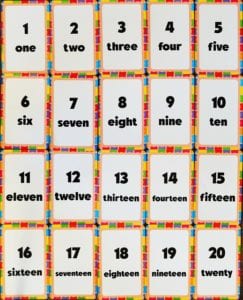The ABLE Act changed the way we think about saving and spending money for our family members with special needs. For the first time, we can now have a simple, tax-advantaged way to save that also allows our family member to access money without fear of losing Medicaid benefits or having to ask a trustee or family member for money.
Ideally, my daughter with Down syndrome learns to save and spend money like her siblings and peers in the community. In the past, she could not have more than $2,000 in her own name of countable resources otherwise, once she’s an adult, she’d lose access to Supplemental Security Income (SSI), which is resource based, and the Medicaid benefits that may come along with SSI qualification. A bank account, retirement account or investment account in her name all are countable resources.
Now, with the ABLE, families like ours have more options in their planning. The ABLE does not count as a resource and unless there’s more than $100,000 in an account, there is no loss of SSI. The ABLE allows money to grow without any taxes owed, like a Roth IRA, and if the money comes out for a qualified disability expense (QDE) there is no tax owed on the gain. These are tax-free investment accounts if used properly and that feature alone is a big advantage over other options.
The tax benefits of the ABLE are not the only features that helps make these accounts useful in planning, but they can be important. Growth in ABLE accounts can be tax free when the money is spent on certain goods and services, otherwise capital gains taxes or penalties could be owed. It helps to understand QDEs to best use these accounts as designed.
The Act includes the following as QDEs – education, employment training and support, housing, transportation, assistive technology and personal support services, health, prevention and wellness, financial management and administrative services, expenses of ABLE account oversight, legal fees and funeral and burial expenses and does not limit expenditures to only these listed categories. The IRS, the entity that would decide whether a distribution counts as a QDE or not for tax purposes, has yet to release rulings governing distributions. That being said, the Act has been interpreted to mean that there should be a broad view of distributions to include basic living expenses and not just those where there is a medical necessity.
As you can see, the list is long and covers many areas of life. My take, as I think about how to use the ABLE for my family, is that I want each distribution from the account to have a clear connection to the disability and as I read and learn more, this seems to be the best practice at this time.
Education, medical, health and transportation jump out as expenses easily identified as related to a disability. Speech therapy, mental health services and dental work are not often covered, in full, by other insurance or benefit sources and it seems obvious that the ABLE could be used here.
Other expenses might not have the same degree of clarity. Can the ABLE buy a cell phone and pay for the ongoing service plan? For some people with intellectual and developmental disabilities, a cell phone is a crucial link for safety, education and social interaction as well as a device to be used for reminders for actions like taking medications, getting transportation and communicating with employers. For some people, a case can be made that account distributions for a phone and service plan qualify as a QDE.
Transportation expenses are QDEs. Does this mean the account can be used to buy a car? It seems likely, especially if that car is used to improve the person’s life or is a modified vehicle to help with a wheelchair. It also seems like the ABLE account could be used for Lyft or Uber rides, especially when those rides are to be used to get to a medical appointment, day program or something similar. It’s less clear about whether that same ride to a movie or restaurant would qualify as a QDE, even though transportation is included as a listed category. To me, it’s the degree to which the expense is used in connection with the disability.
Practically speaking, most ABLE accounts won’t have so much money in them that they can pay for everything. My plan is to tie distributions closely to expenses that are clearly identified as relating to the disability, as opposed to personal use or pure entertainment ones. ABLE accounts are still new, and we will see more guidance from the IRS coming out over time which will provide more direction than we have now.
Don’t let concerns about QDEs slow you down about starting an ABLE if you want to help your family member with special needs gain a degree of financial independence. They work great in situations where that family member is working and is having trouble each month spending the money they earn. They work great in situations where you have parents, siblings and other family members who want to make a gift, but you haven’t wanted that money to add up to more than $2,000.
ABLEs are another planning tool to use – they don’t replace the need for trusts, saving for your own retirement or taking steps to qualify for and preserve government benefits. Most likely they will benefit your family at some point. Call me or get in touch to talk more about ABLE accounts and your special-needs planning objectives.




